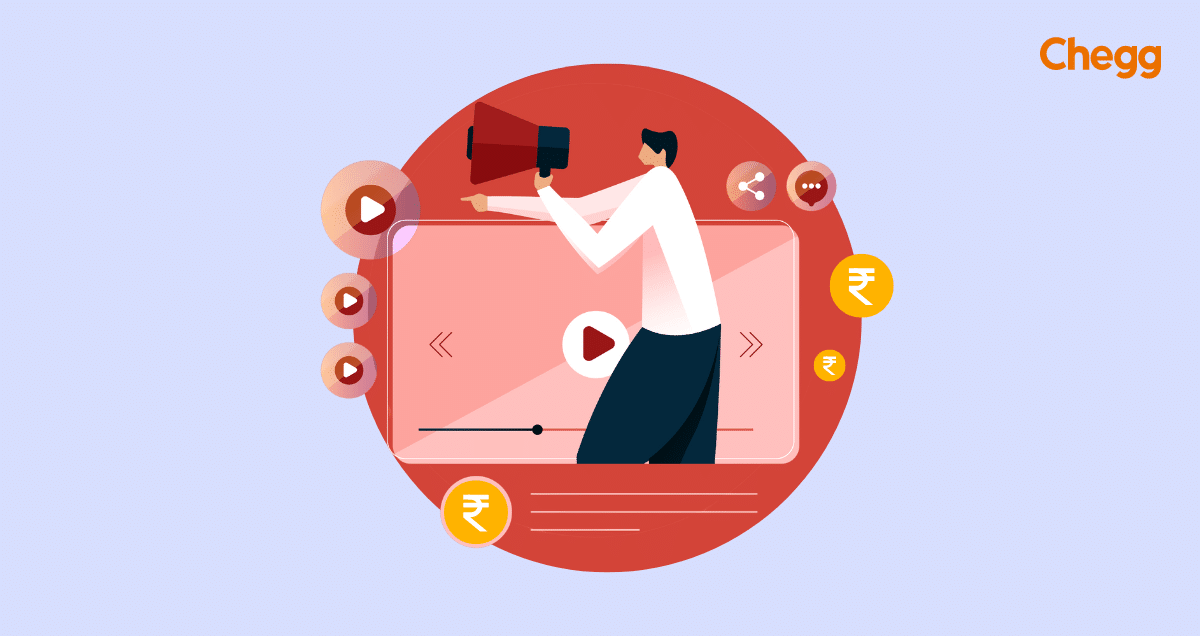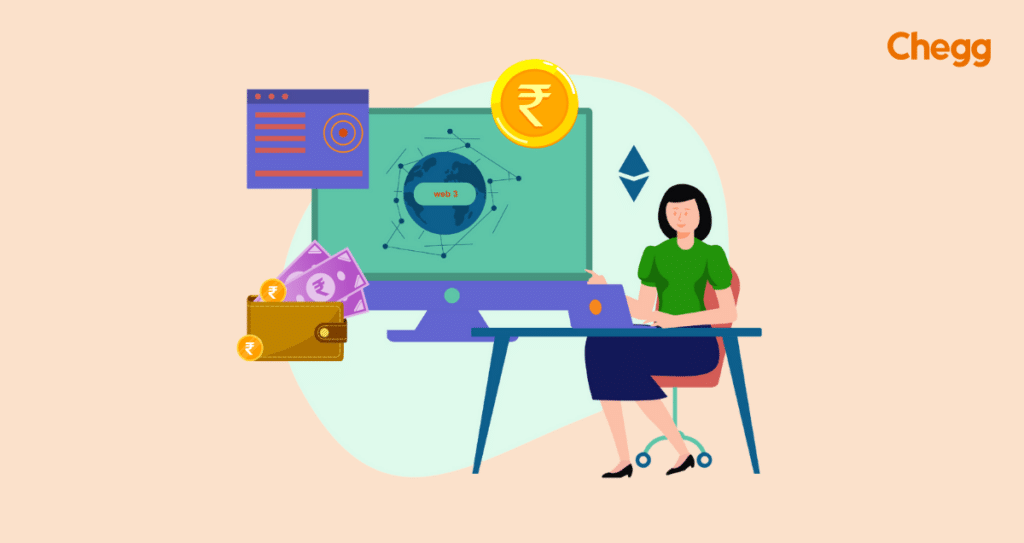

Quick Summary
- In 2024, YouTube monetization is a trending way to earn money from YouTube by uploading video content through various modes like ad placements, channel memberships, Super Chats, and Shorts.
- To qualify for YouTube monetization, the channel must have at least 1000 subscribers and 4000 watch hours in the past 12 months that comply with YouTube policies and guidelines.
- The creators should focus on producing and delivering high quality and engaging content that attracts and retains views to maximize earnings.
Table of Contents
Video content is more popular than ever. In 2024, video content is the king. Being able to make money on YouTube is the dream of every creator. It can help them start money-making side hustles by choosing their YouTube career as their full-time job, or market their products in physical stores. One can make enough money from YouTube with the right strategy and patience. They can use their channel to spread the word about their passion or what they like by which they can earn money too. So, if you are serious about how to monetize YouTube channels, read this article to learn about YouTube monetization criteria.
What is YouTube Monetization?
YouTube monetization is a way to earn money from the platform by uploading video content. This means people have to watch your videos for 4,000 hours. When you get approved by YouTube, you get ads on your videos. You earn money when your audience watches or clicks on an ad in your video. YouTube takes 45% of the revenue, and you get 55%. In simple words, YouTube monetization means earning money from your YouTube videos. Businesses advertise on YouTube by creating ads through the Google AdSense Network.
Understanding YouTube Monetization
Monetizing a YouTube channel is a dream come true for many. There are a few YouTube monetization rules. YouTube takes about a month to review your application. Some standard channel requirements exist to join the YouTube Partner Program (YPP). These are discussed in the next segment. It is vital to fulfill all YouTube monetization policies. Also, for security purposes, one must set up the 2-step verification.
- Make sure you don’t make copyright mistakes on YouTube.
- Only upload videos that you made or have permission to use.
- This includes music, audio tracks, and other copyrighted works.
If you break the rules, YouTube can remove ads from your videos, suspend you from the YPP, or even terminate your account.

YouTube Monetization Policies
YouTube monetization policies determine the requirements for creators to earn money from their videos. Your video will be monetized if it meets YouTube’s monetization policy. To be eligible for YouTube AdSense earnings, you must meet the following requirements:
- You need 1,000 subscribers on your channel.
- You must have 4,000 hours of viewer-watch time. It is for the previous 12 months.
- Reside in a country that has access to the program.
- Create an AdSense account with all details and link it to your YouTube channel.
- Ensure there are no active community guidelines strikes on your channel.
- Comply with all YouTube monetization regulations.
- YouTube reviews and verifies your application before granting monetization to your account. It can be around a month before you receive a response from YouTube regarding your Partner Program application.
How to Get Your Video Monetized?
The monetization of a YouTube channel has different elements and rules. You can use this step-by-step process to monetize and earn through YouTube videos.
1. To start your YouTube channel:
- Visit YouTube.
- You will then view the options to either register or sign in. Click on the “Sign In” option if you have your YouTube account.
- To create a new account, simply follow the instructions mentioned. You will require your email address, channel name, password, and other details. Complete the requirements to create your account.
- Mention other details like your channel logo and description.
2. Upload your video:
- Sign in to your YouTube account through the website or the application.
- Click on the “Upload” button.
- Select the video or content file from your device and upload it
3. Meet YouTube monetization requirements.
- There must be at least 1,000 subscribers on your channel.
- Gathering 4,000 viewer-watch hours within the past 12 months.
- Comply with all YouTube’s policies and guidelines.
4. Enable monetization
- Sign in to your YouTube account.
- Go to YouTube Studio.
- Click the “Monetization” option
- Set up your AdSense account as per the procedure.
- Enable monetization for your videos.
5. Review and optimize your video.
- Ensure your video complies with YouTube’s advertiser-friendly guidelines.
- Optimize your titles, description, and tags for videos for searchability.
- Create engaging thumbnails and add relevant metadata.
6. Promote your video
- Now start sharing your video.
- Collaborate with other YouTubers or influencers.
- Engage your viewers and request them to share your video.
7. Monitor and analyze your video performance
- Use YouTube Analytics to track views, watch time, and audience engagement.
- Identify areas for improvement and engagement. Adjust your further content accordingly.
8. Comply with YouTube’s policies
- Regularly review and update your content to meet YouTube’s policies.
- Avoid copyright infringement and use licensed music or content.
9. Apply for YouTube’s Partner Program
- Apply for the YouTube Partner Programme once you have met the requirements.
- Wait for YouTube’s review and approval process.
10. Start earning money
- Once approved, ads for various businesses will be displayed on your videos.
- You’ll earn revenue based on ad views, clicks, and other factors.
Top Ways to Monetize Your Videos on YouTube
Following are the best 10 ways to monetize your YouTube videos:
1. YouTube Partner Programs
You should make your videos engaging and relatable to the audience. This attracts more people. The more people view and interact with your content, the more the ad revenue. The AdSense program is where various businesses pay YouTube to get their advertisements on videos of different channels. It is the primary monetization source. You must fulfil the rules and apply for this program. The end goal of your video should be to engage the audience so that they stay for the video and watch the advertisements as well. Some viewers may click and interact with them, which will be a bonus revenue source. It will be an excellent passive income source from your YouTube channel.
2. Affiliate Marketing
YouTubers can earn money through affiliate marketing by promoting products and receiving commissions. First, assess and sign up for an affiliate program based on location. Once approved, you’ll receive a unique link for each product or service you promote. To share your affiliate link, create content such as product reviews, unboxing videos, or how-to guides. Remember to add an affiliate-related disclaimer in your video or description, informing your audience about the commission you’ll earn. You’ll earn a commission when someone purchases a product through your unique link.
For example: if you make a GoPro camera instructional, urge visitors to use your affiliate link when purchasing the product. According to Amazon, affiliate commissions can be up to 10% of each product sale. You can earn significant money by dedicating some time to promoting these links.
3. YouTube Influencer
Influencer marketing and sponsorships are rising, with brands investing their marketing budget in trusted influencers who resonate with their target audience. As a creator, the right partnerships can open up countless possibilities for you. YouTubers, for instance, can earn a significant income by endorsing products and services, similar to affiliate marketing. By strategically aligning with brands and leveraging YouTube monetization features, creators can unlock a multitude of financial opportunities while delivering valuable content to their dedicated audience.
Brands and established businesses will be interested in collaborating with you if you possess a sizable and engaged following and your content aligns with a brand’s target market. However, getting a brand’s endorsement is challenging, especially with a small fan base.
With YouTube brand deals, you can generate income by featuring products or services in your videos. Working with multiple brands allows you to earn more for your channel and reduces reliance on AdSense revenue.
4. Paid Sponsorship
Paid sponsorships occur when brands pay or sponsor content creators to feature, use, or demonstrate their products in videos. While sponsorships benefit both creators and brands, they also enhance the viewing experience for audiences.
Securing sponsorships may be challenging, but the rewards can be substantial. If you already have an established and popular account and a large following, you can approach relevant niche brands and propose a video partnership. To secure a sponsorship, showcase your past work, YouTube analytics, and engagement rates to demonstrate your value to brands. Generally, joining multiple platforms maximizes your exposure and attracts suitable businesses.
5. Channel Memberships
YouTube channel memberships are monthly subscriptions where fans receive exclusive perks. Creators provide special offerings to members, like product discounts, 1:1 live chats, or exclusive videos. By joining a channel, viewers can access a range of extra incentives: loyalty badges, private live streams, exclusive videos, and more. Memberships present a clever revenue stream on YouTube since customization is key, including the ability to set the price. Creators can charge between $0.99/81INR and $100/8200INR monthly, tailoring the membership experience to their community’s preferences.
Also Read: Top 10 Ideas for YouTube Channel- Get Started as a YouTuber
6. YouTube Shorts Fund
YouTube launched a $100 million fund for Shorts creators in May 2021. Each month, creators can earn between $100/8200INR and $10,000/8,20,000INR based on engagement and views. Eligibility refreshes monthly, allowing creators to qualify in the future. There’s no need to be in the YPP to receive the Shorts Fund, which is advantageous for those who don’t meet YPP requirements.
These creators must fulfil the eligibility criteria for the YouTube Shorts Bonus.
- They need 1,000 subscribers and either 10 million eligible Shorts views or 4,000 valid watch hours on long-form videos.
- YouTube’s revenue-sharing model splits ad revenue between creators and music publishers. Music publishers receive payment based on the use of their intellectual property.
- Revenue distribution depends on the number of music tracks used in a Short, ranging from 66% to the publishers and 33% to the creator to a 50/50 split or the full share to the creator if no music is used.
- After deducting for music usage, monetizing authors keep 45% of their revenue share. Shorts monetization considers views, location, and music tracks used by creators.
The Shorts Fund is an excellent option for channels doing well in short-form content. They don’t need to be eligible for the partner’s program. Also, it provides a revenue source to several up-and-coming channels.
7. YouTube Premium Revenue
YouTube also has a subscription service, YouTube Premium. It allows watching content without ads, downloading videos, and many other features. So, how does this impact monetization? Do creators who monetize their videos through ads still get paid when YouTube Premium members watch their content? According to YouTube, creators receive subscription revenue payments at the start of each month, just like ad revenue payments. The amount they receive depends on how much premium members watch their videos. A user’s monthly fee is divided among the creators whose videos they watched the most that month, assuming they have a YouTube Premium membership. In the realm of YouTube monetization, creators benefit from YouTube Premium through an additional revenue stream.
8. Super Features
Have you ever noticed chat messages standing out during a YouTube livestream? That’s because creators can enable Super Chat, where viewers can pay to have their messages featured. Another feature to make money on YouTube is through Super Chat and Super Stickers. As a YouTube Partner, you can activate these features during live streams. For a small fee, your subscribers can use Super Chat or Super Stickers to make their messages stand out in the chat. They even receive personalized badges and emoticons during your live sessions and exclusive benefits like members-only live chats. These features are perfect for digital creators and brands who create helpful videos, offering extra income and a way for fans to show support and gratitude.
9. Selling Merchandise
Selling branded merchandise on YouTube opens up an additional revenue stream for creators, especially those without their website. With over 45 supported merch platforms worldwide, you have a chance to expand your brand.
Selling merchandise allows you to earn money from your audience, as subscribers can show their support by purchasing shirts, caps, and notebooks. Selling merchandise is often easier and more reliable than relying solely on AdSense, as it depends on a growing fan base continuously purchasing your products.
10. Patronage
If you have a loyal fanbase, Patreon offers perks to patrons who support your content. It’s like YouTube’s channel membership but with tiered options. You can provide exclusive behind-the-scenes videos or offer perks like early access and one-on-one time, regardless of your subscriber count. Many YouTube creators and brands use Patreon.
Maximize the Earning Potential of Your Videos
YouTube has opened doors for creators worldwide to earn money from their passions. To monetize your channel:
- Simply choose an effective method.
- Experiment with multiple methods to find what works best.
- Don’t upload random or haphazard videos.
- Research your topic and plan your video structure.
No need for daily or thrice-weekly uploads; one strategic video per week suffices. Following the simple steps we have mentioned, you can make the most out of YouTube’s monetization policy and generate more revenue by creating engaging content that aligns with the YouTube monetization rules.
Want to earn money in the comfort of your home? Dive into our guide to Online Jobs.
Frequently Asked Questions (FAQ’s)
How do I monetize my YouTube?
To monetize your channel, you need to follow YouTube monetization rules. The YouTube earning criteria include having at least 1,000 subscribers. Also, the channel should have 4,000 watch hours within the last 12 months. If approved, you can enable monetization features such as displaying ads on your videos, participating in the YouTube Partner Program, and earning revenue from ad placements and channel memberships.
What are 4,000 watch hours on YouTube?
On YouTube, 4,000 watch hours refer to the total viewing time users spend watching your videos. It is a measurement used by YouTube to determine an eligibility method for certain programs, such as the YouTube Partner Program (YPP). To qualify, creators must have accumulated at least 4,000 valid public watch hours for their content within the last 12 months and meet other requirements like having 1,000 subscribers.
Do you need 1000 subscribers to get paid on YouTube?
Yes, you need 1000 subscribers for YouTube monetization. However, having 1,000 subscribers alone is not the only requirement. You must also meet other criteria rules, like having 4,000 valid public watch hours in the last 12 months, following YouTube’s monetization policies, linking an AdSense account, and fulfilling certain security measures like using 2-Step Verification.
How do I get 4000 hours on YouTube?
To reach 4000 hours on YouTube, you need 4000 hours of watch time by the viewers of your videos. You can check the YouTube Studio monetization section to manage and track your monetization settings and earnings. You need more viewers to watch your videos for a longer time. It includes providing engaging or educational content. Viewers should be entertained enough to avoid skipping to the next video.
Does YouTube pay for shorts?
Yes, YouTube does pay for shorts. Creators are eligible to make money through YouTube Partner Program if their Shorts generate handsome number of views and engagement. Also, there is a Shorts Fund that gives away the reward to the popular creators with bonuses. Unlike YouTube videos, the Shorts are based more on views, engagement, and performance.
Other Related Reads
To read more related articles, click here.
Got a question on this topic?



